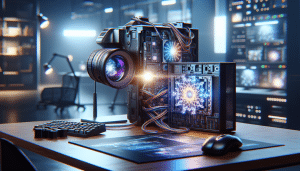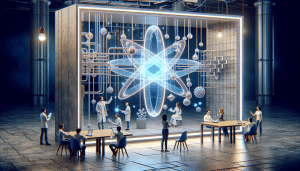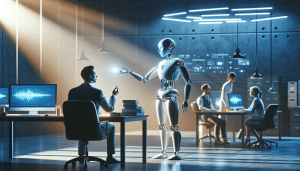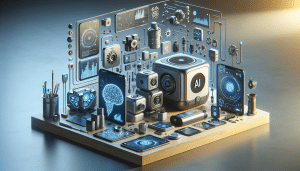What You Might Not Expect About Artificial Intelligence
Aiden Foster September 5, 2025
Explore the fascinating impact of artificial intelligence on daily life, from how machine learning shapes science to surprising uses in technology. Uncover ways AI influences cybersecurity, health, and creative innovation, all in this comprehensive guide.
Understanding Artificial Intelligence in Everyday Life
Artificial intelligence, or AI, quietly integrates into countless experiences many never notice. Today, from voice assistants answering questions to recommendation systems shaping entertainment choices, AI algorithms support daily routines. Machine learning, a subset of AI, enables computers to learn from data and make predictions or decisions without explicit programming. This behind-the-scenes technology powers predictive text in messaging apps, fraud detection in banking, and even smart thermostats that adapt to personal comfort preferences in homes.
Natural language processing and computer vision, two prominent branches of artificial intelligence, enable machines to understand human language and interpret visual information. When a smartphone recognizes a face or a search engine offers relevant autocomplete suggestions, it is the result of trained models analyzing vast amounts of data for patterns. With these tools, businesses personalize user experiences—increasing satisfaction and efficiency for consumers in unseen ways every day.
AI’s impact has expanded far beyond simple automation. It enriches productivity, empowers creativity, and sometimes even anticipates needs. Digital calendars that suggest the best meeting times, or apps that propose healthier meal options based on past choices, demonstrate AI’s practical value. The invisible hand of artificial intelligence is now a daily companion, adapting and growing smarter with each interaction.
Machine Learning: The Engine Behind Modern Science
In scientific research, machine learning drives remarkable breakthroughs. By evaluating massive datasets—sometimes too complex for traditional analysis—AI systems help researchers identify patterns, predict outcomes, and streamline experiments. This technology is transforming areas like drug discovery, where algorithms suggest molecular structures likely to yield promising medicines, speeding up efforts that once took years.
Climate modeling depends heavily on artificial intelligence. Scientists feed climate data into machine learning models to forecast weather, analyze the progression of climate change, and even plan sustainable farming practices. AI can simulate millions of scenarios based on changing environmental variables, delivering insights for policymakers and communities looking to adapt to a shifting world (Source: https://www.noaa.gov/education/resource-collections/weather-atmosphere/artificial-intelligence-in-weather-forecasting).
Medical diagnostics have entered a new era thanks to deep learning, a subset of machine learning that reviews detailed images like X-rays and MRIs. AI systems now assist doctors in identifying early signs of diseases such as cancer with surprising accuracy. They highlight subtle changes a human eye might overlook, offering a second layer of scrutiny and potentially improving patient outcomes (Source: https://www.cancer.gov/news-events/cancer-currents-blog/2019/deep-learning-medical-imaging).
AI and Cybersecurity: Protecting Data in the Digital Age
Cybersecurity experts increasingly rely on artificial intelligence to defend systems and personal data from malicious threats. Machine learning models continuously monitor network traffic and learn to spot suspicious activity, such as unknown patterns of data movement or unrecognized login attempts. The ability of AI to adapt and predict the strategies of cybercriminals makes it an essential safeguard in a world with escalating digital risks.
Phishing attacks, malware, and identity theft remain persistent challenges. AI tools help companies quickly identify these threats and shut them down before harm is done. Some platforms scan emails and web pages in real time, flagging potentially harmful sites based on rapidly updated databases and contextual cues. This proactive defense offers peace of mind for users navigating the internet for business or pleasure (Source: https://www.cisa.gov/topics/cybersecurity-defenses/artificial-intelligence).
This evolving field doesn’t just stop at prevention. Artificial intelligence also assists response and recovery efforts, automating the process of isolating compromised systems and restoring safe operations. As hackers grow more sophisticated, AI-driven defense learns from each attempted breach, becoming smarter and more effective with every challenge.
Healthcare and AI: From Predictive Analysis to Personalized Care
Healthcare is a field where artificial intelligence’s benefits swiftly move from the laboratory to the bedside. Predictive analytics uses patient data, such as genetics and medical history, to help doctors anticipate health events before they happen. For individuals with chronic illnesses, AI can suggest personalized care plans and alert medical professionals if a sudden risk emerges.
Virtual health assistants, powered by AI, enable patients to monitor symptoms, set medication reminders, and get answers to common health questions, all through their smartphones or smart speakers. Telemedicine platforms also use AI-driven screening tools to prioritize patients based on urgency, making healthcare more accessible and responsive, especially for those living in remote regions.
Precision medicine, a groundbreaking approach, leverages AI to analyze genetic information and lifestyle factors to design custom treatments. These advancements hold promise for combating diseases more effectively with fewer side effects. The ongoing partnership between healthcare professionals and intelligent digital tools leads to innovative ways of delivering patient care and optimizing hospital management (Source: https://www.nih.gov/news-events/nih-research-matters/artificial-intelligence-improves-healthcare).
Creativity and AI: New Frontiers in Art and Design
AI is making waves in creative industries once thought immune to automation. Tools that generate music or visual art enable artists and designers to explore uncharted creative territories. Some AI programs learn individual artistic preferences, offering personalized suggestions or even composing original works based on popular cultural trends and user feedback.
Fashion and architecture benefit from AI’s ability to quickly analyze volumes of design references, predict future trends, and recommend harmonious color palettes or materials. This speeds up development cycles and helps professionals experiment with unconventional concepts in a risk-free digital space (Source: https://www.si.edu/stories/ai-creative-arts).
Writers and content creators find AI-powered editors increasingly valuable. Language models streamline the revision process, offer creative prompts, and ensure consistency across large projects. With each technological leap, artificial intelligence quietly becomes a creative collaborator—helping dreamers bring big ideas to life.
Ethics, Bias, and Transparency in Artificial Intelligence
As artificial intelligence influences more decisions, questions about ethics grow steadily. Data sets used to train AI may contain hidden biases, creating the potential for unfair outcomes. Developers and researchers must examine these datasets carefully to identify skewed patterns that might negatively impact individuals or groups.
Transparency is another central concern. When AI algorithms make decisions about job applications or loan approvals, it’s important that results are explainable. The demand for “ethical AI” grows louder in academic, government, and private sectors alike. Policies that require disclosure about how a decision was made help increase trust and accountability (Source: https://www.brookings.edu/articles/how-to-reduce-bias-in-artificial-intelligence/).
Public and private organizations now invest in strategies to reduce discrimination in AI-driven processes. Future blends of AI and human judgment are likely, ensuring that fairness remains a guiding principle. These collaborations will shape public understanding and foster confidence as artificial intelligence becomes more entwined with society.
References
1. National Institutes of Health. (n.d.). Artificial Intelligence Improves Healthcare. Retrieved from https://www.nih.gov/news-events/nih-research-matters/artificial-intelligence-improves-healthcare
2. National Oceanic and Atmospheric Administration. (n.d.). Artificial Intelligence in Weather Forecasting. Retrieved from https://www.noaa.gov/education/resource-collections/weather-atmosphere/artificial-intelligence-in-weather-forecasting
3. National Cancer Institute. (2019). Deep Learning Shows Promise for Medical Imaging. Retrieved from https://www.cancer.gov/news-events/cancer-currents-blog/2019/deep-learning-medical-imaging
4. Cybersecurity & Infrastructure Security Agency. (n.d.). Artificial Intelligence in Cybersecurity Defenses. Retrieved from https://www.cisa.gov/topics/cybersecurity-defenses/artificial-intelligence
5. Brookings Institution. (n.d.). How to Reduce Bias in Artificial Intelligence. Retrieved from https://www.brookings.edu/articles/how-to-reduce-bias-in-artificial-intelligence/
6. Smithsonian Institution. (n.d.). AI in the Creative Arts. Retrieved from https://www.si.edu/stories/ai-creative-arts








